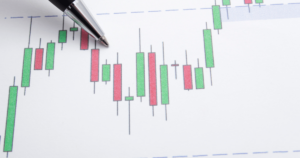Risk management is a crucial aspect of successful forex trading. It involves implementing strategies to identify, assess, and mitigate potential risks associated with trading activities. By effectively managing risk, traders can protect their capital, minimize losses, and increase the likelihood of long-term profitability. This comprehensive guide will provide you with a deep understanding of risk management in forex trading, including key concepts, strategies, and practical tips to help you navigate the market with confidence.
Understanding Risk in Forex Trading
Before diving into risk management strategies, it’s important to grasp the nature of risk in forex trading. Forex markets are inherently volatile, influenced by various factors such as economic news, geopolitical events, and market sentiment. The potential for significant price fluctuations creates opportunities for profit, but it also exposes traders to risk.
The key types of risk in forex trading include:
- Market Risk: Market risk refers to the possibility of losses resulting from adverse market movements. Currency prices can fluctuate rapidly, and traders may experience losses if their trades go against them.
- Leverage Risk: Leverage amplifies both potential profits and losses. While leverage can magnify gains, it also increases the risk of significant losses if trades move in the opposite direction.
- Operational Risk: Operational risk encompasses risks associated with the trading platform, execution of trades, technological failures, and human error. Traders must be aware of and manage these operational risks to ensure smooth trading operations.
- Counterparty Risk: Counterparty risk arises from the potential default or insolvency of a broker or counterparty involved in a trade. Choosing a reputable and regulated broker is essential to mitigate counterparty risk.
Risk Management Strategies
Implementing effective risk management strategies is essential for protecting your trading capital. Here are key strategies to consider:
1. Develop a Trading Plan
A trading plan serves as a roadmap for your trading activities. It outlines your trading goals, risk tolerance, entry and exit criteria, and overall trading strategy. By adhering to a well-defined plan, you can minimize impulsive decisions driven by emotions and maintain discipline in your trading approach.
2. Set Risk-to-Reward Ratios
Risk-to-reward ratios help you determine the potential gain you expect from a trade relative to the amount you’re willing to risk. For example, a 1:2 risk-to-reward ratio means you’re willing to risk $1 to potentially earn $2. By setting favorable risk-to-reward ratios, you can ensure that your potential profits outweigh potential losses, even if not all trades are successful.
3. Utilize Stop-Loss Orders
A stop-loss order is a risk management tool that automatically closes a trade if the market moves against you, limiting potential losses. By setting appropriate stop-loss levels based on your risk tolerance and market analysis, you can protect your capital and prevent significant drawdowns.
4. Diversify Your Portfolio
Diversification involves spreading your trading capital across multiple currency pairs and potentially other financial instruments. By diversifying, you reduce the concentration of risk in a single trade or currency pair. This strategy can help protect your portfolio from significant losses if one trade or market sector underperforms.
5. Practice Position Sizing
Position sizing refers to determining the appropriate trade size based on your account balance and risk tolerance. Avoid risking a significant portion of your trading capital on a single trade. By allocating a reasonable portion of your capital to each trade, you can reduce the impact of potential losses on your overall account.
6. Stay Informed and Adapt
Market conditions can change rapidly, requiring traders to stay informed and adapt their strategies accordingly. Continuously monitor economic indicators, news events, and market sentiment to make informed trading decisions. Be prepared to adjust your risk management approach based on evolving market dynamics.
7. Regularly Review and Evaluate
Periodically review and evaluate your trading performance and risk management strategies. Assess the effectiveness of your approach, identify areas for improvement, and make necessary adjustments. Keeping a trading journal can be helpful in analyzing your trades, identifying patterns, and learning from both successful and unsuccessful trades.
Common Queries About Risk Management in Forex Trading
1. Why is risk management important in forex trading?
Risk management is crucial in forex trading to protect your capital, minimize losses, and increase the likelihood of long-term profitability. It helps you navigate the inherently volatile nature of the forex market and ensures disciplined and informed decision-making.
2. How can I determine my risk tolerance?
Determining your risk tolerance involves assessing your financial situation, investment goals, and personal comfort with risk. Consider factors such as your time horizon, financial obligations, and emotional ability to withstand potential losses. It’s important to be honest with yourself and establish a risk tolerance that aligns with your individual circumstances.
3. Are there any tools or software that can assist with risk management?
Several tools and software are available to assist with risk management in forex trading. These may include trading platforms withbuilt-in risk management features, risk calculators, position size calculators, and trade analysis tools. It’s recommended to explore and utilize these resources to enhance your risk management capabilities.
4. Can risk management completely eliminate losses in forex trading?
While risk management strategies aim to minimize losses, they cannot completely eliminate the possibility of losses. Forex trading involves inherent risks, and even the most skilled traders experience losses at times. However, effective risk management can help mitigate losses and protect your capital over the long term.
5. Should I use automated trading systems for risk management?
Automated trading systems, also known as algorithmic trading or trading robots, can be used for risk management purposes. These systems can automatically execute trades based on predefined rules and parameters, including risk management strategies like stop-loss orders. However, it’s important to thoroughly test and evaluate automated systems before using them, as they are not foolproof and may have limitations.
Key Takeaways
- Risk management is an essential aspect of forex trading and involves identifying, assessing, and mitigating potential risks.
- Understand the different types of risks in forex trading, including market risk, leverage risk, operational risk, and counterparty risk.
- Implement key risk management strategies, including developing a trading plan, setting risk-to-reward ratios, utilizing stop-loss orders, diversifying your portfolio, practicing position sizing, staying informed and adaptable, and regularly reviewing and evaluating your performance.
- Determine your risk tolerance based on your financial situation, goals, and personal comfort with risk.
- Utilize available tools and software to enhance your risk management capabilities.
- Remember that risk management cannot completely eliminate losses, but it can help protect your capital and increase the likelihood of long-term profitability.
- Consider the use of automated trading systems cautiously and conduct thorough testing before relying on them for risk management purposes.
By adopting a disciplined and strategic approach to risk management, you can navigate the forex market with confidence, minimize potential losses, and increase your chances of achieving consistent and sustainable trading success.








